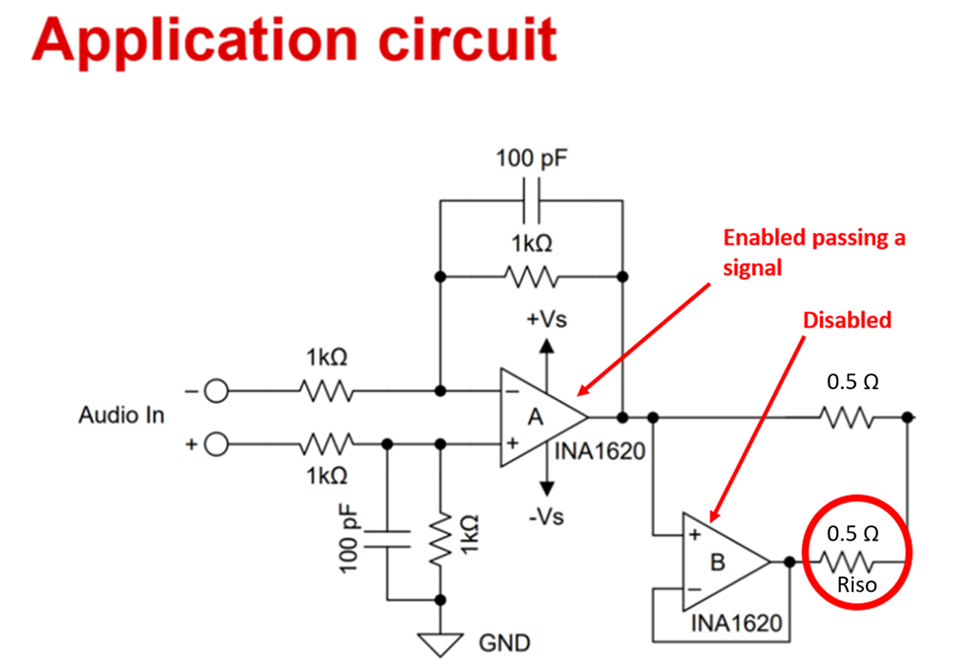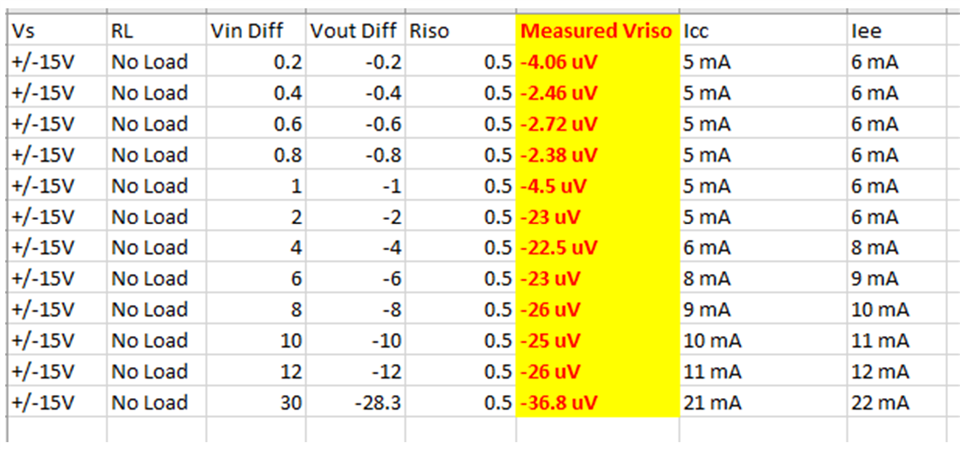Other Parts Discussed in Thread: INA1620, , OPA1637
Tool/software:
So, as is the way of engineers, I have seen a square hole and a round peg, and decided the two must meet.
I have an application where I need to be able to toggle between multiple amplifiers with different gain configurations rapidly, without using mechanical relays, and without measurable degradation of the distortion or noise performance when loaded between 4 and 600Ω. I also need to achieve a total output noise below 1uVrms for 22khz bandwidth, and distortion products below that with 2Vrms out. Easy ask, right? The OPA1622/INA1620 seemed like a lifeline here, until I got to this page in the datasheet
Now, if I literally do exactly the opposite of what I'm being told to here and *did* put, say, 4 OPA1622s with their outputs and inputs in parallel, and selectively used the EN pin to activate them one at a time, what's the impact of the parasitically powered output stages assuming that each of the 1622s has negligible output impedance beyond its own Zout? My intuition would be that, while not high-Z, the source impedance of the parasitic components would be significant enough to make their contribution at the output quite small, but my intuition is also that my wrench is a good hammer, so I'm asking here.
Alternatively, are there any ultra-low-noise, ultra-low-distortion opamps that do support shutdown with the output in high-Z state? I've found the OPA1637, but I need a difference amplifier, not an FDA.



